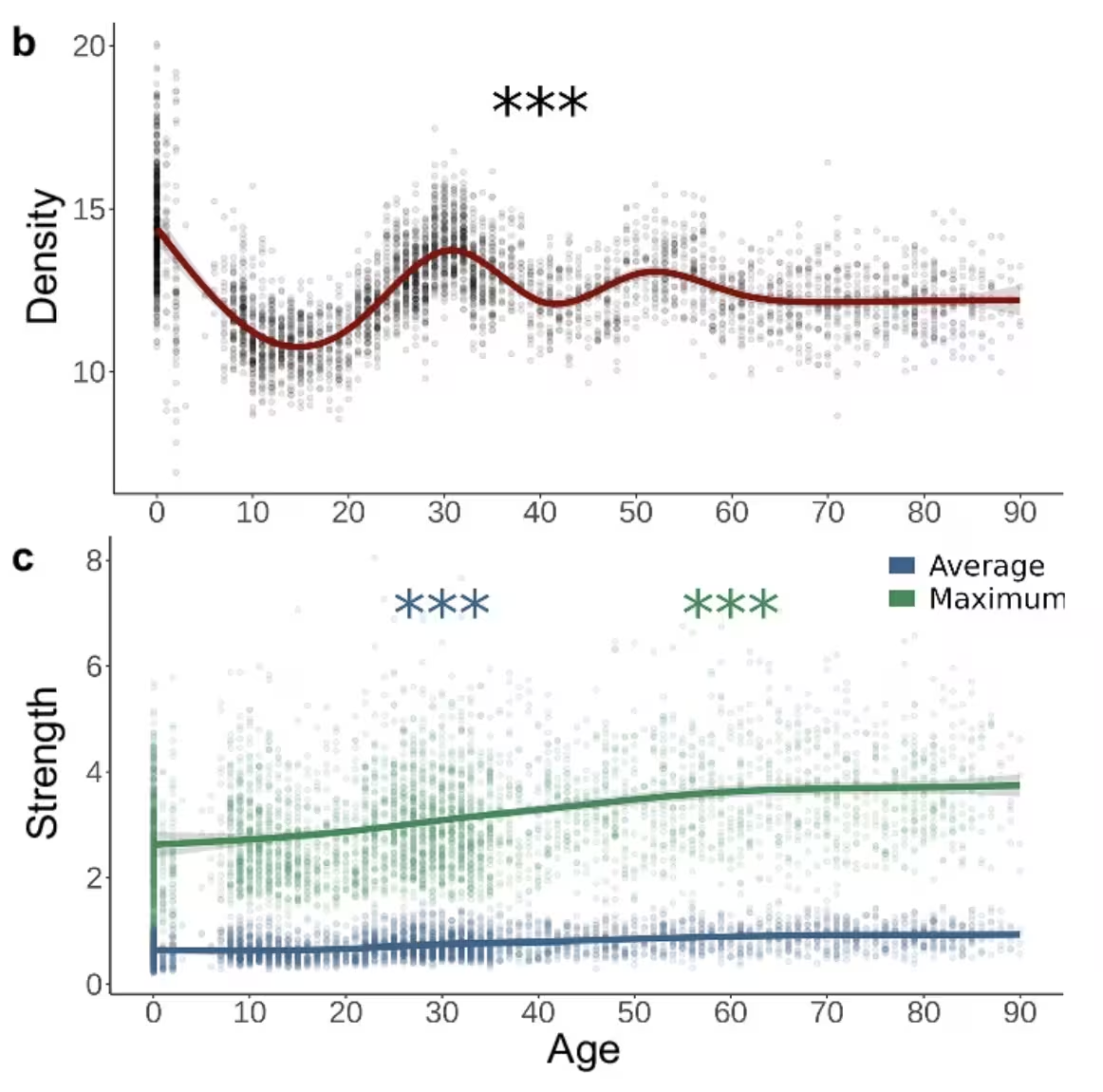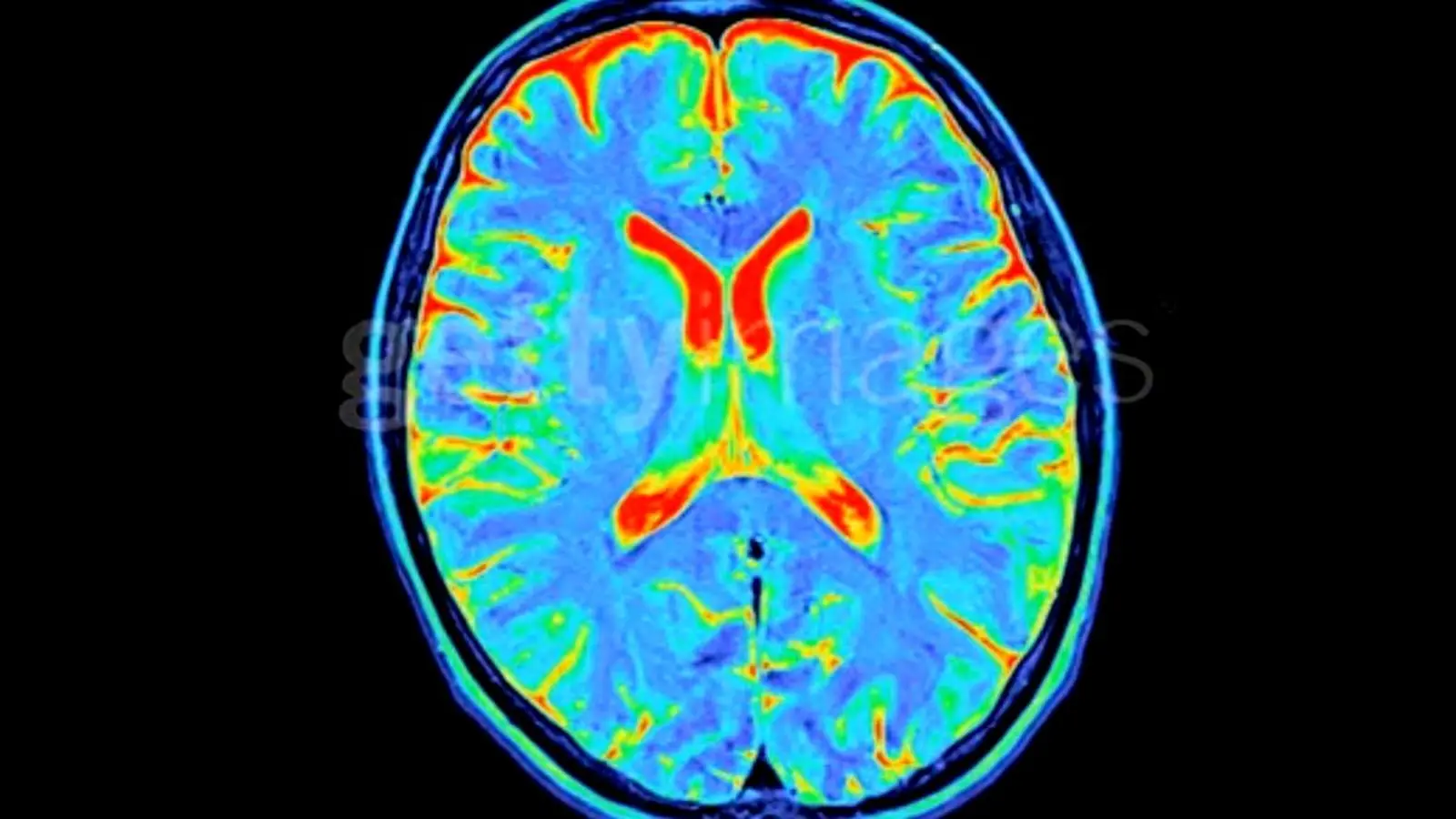8 Minutes
Neuroscientists now describe the human brain not as a fixed machine but as an organ that shifts its wiring in predictable phases across the lifespan. A new large-scale MRI study spanning infancy to the ninth decade identifies four major turning points that divide life into five distinct neurological epochs — each with its own pattern of growth, consolidation or decline.
Mapping a lifetime of brain wiring
Researchers from the University of Cambridge and the University of Pittsburgh analyzed MRI scans from 3,802 neurotypical participants aged from infancy to 90. By tracking how structural connectivity changes with age, the team found consistent inflection points at roughly 9, 32, 66 and 83 years. Those ages separate five broad phases the authors call childhood, adolescence, adulthood, early aging and late aging.
These turning points are not arbitrary. They reflect measurable shifts in two complementary aspects of brain architecture: how densely brain regions are connected, and how efficiently information flows between them. Put simply, the brain’s wiring evolves from a densely connected—but weakly organized—network in early life to a sparser, more efficient and specialized topology in middle age, then toward progressive disconnection in the later decades.
Epoch 1 — Birth to ~9: Rapid growth, then pruning
The first epoch is a period of dramatic expansion. In infancy and early childhood gray matter (neuronal cell bodies) and white matter (the axonal wiring between regions) grow rapidly. This stage builds an abundance of synapses and pathways, giving young brains enormous plasticity — the ability to learn and reorganize.
As children approach puberty, that exuberant wiring begins to be refined. Neural pruning trims redundant or weak connections, leaving a leaner, more efficient network. Researchers describe this early pattern as a transition from a dense, diffuse network toward more streamlined and specialized circuits.
Epoch 2 — Adolescence: Refinement and rising efficiency
Adolescence brings another wave of structural reconfiguration. Hormonal changes that accompany puberty coincide with continued growth in white matter volume and increasing segregation of functional systems. Metrics such as global efficiency — how well different regions communicate across the whole brain — and local efficiency both improve during this period.
These changes support gains in cognitive control, information processing and social-emotional skills. Yet adolescence is also a sensitive window: because the brain is actively reorganizing, it is both highly capable of learning and more vulnerable to environmental stresses.
Epoch 3 — Stabilization in early adulthood (around 32)
Contrary to the common idea that the brain reaches full maturity in the mid-20s, the new analysis suggests a later milestone. Around age 32 the trajectory of structural change shifts again: large-scale directional changes in wiring slow and the overall architecture stabilizes. This age also aligns with other research indicating plateaus in measures of cognitive traits such as certain aspects of intelligence and personality.
During this decades-long epoch, brain networks become more modular and compartmentalized: regions operate in more specialized sub-networks rather than broad, overlapping webs. That specialization supports consistent, efficient performance across many cognitive domains.
Epoch 4 — Early aging (around 66): First signs of deterioration
Beginning in the mid-sixties, structural networks show the first clear signs of decline. White matter integrity and inter-regional connectivity diminish, producing sparser networks and reduced global efficiency. This reorganization is gradual but measurable: communication across distant brain regions becomes less reliable, even as local circuits continue to function.
Researchers link these changes to normal aging processes such as myelin breakdown, vascular changes and cumulative cellular stress. At the population level, these network shifts may underlie subtle declines in processing speed, multitasking, and other functions that rely on broad coordination across the brain.
Epoch 5 — Late aging (around 83): From global to local burden
By the early eighties, the balance of cognitive load shifts from whole-brain coordination to more local processing. Global connectivity decreases further, leaving smaller networks to shoulder more of the cognitive work. The study’s sample for this final epoch was smaller than for younger groups, so researchers urge caution, but the pattern is consistent with many clinical observations of late-life decline.
The authors emphasize that these population-level phases do not determine an individual’s fate. Instead, they provide a framework for understanding when the brain is most likely to be optimized for certain tasks — or most vulnerable to disease and dysfunction.

The five epochs of brain aging identified by researchers
How the study measured change
Rather than measuring single regions in isolation, the team analyzed whole-brain connectivity networks. They quantified metrics such as network density, global efficiency and modularity to capture how the brain’s topology shifts with age. The data revealed a clear pattern: early life favors dense but weak networks, adulthood brings sparse and strong wiring, and aging reduces overall connectivity.
Visualizations from the study highlight these shifts across decades, and separate analyses indicate similar trajectories in men and women, though the timing and magnitude of change can vary. The authors also note recent related work showing that specific life events — for example, menopause — may trigger distinct structural changes that have functional consequences, like transient difficulties with memory or attention.

Changes in total network connectivity across the lifespan revealed how brain networks typically shift from dense, weak networks in early life to sparse, strong networks in later life.
Why this matters: health, learning and targeted research
Framing brain change in epochs creates a useful scaffold for clinicians and educators. If we know when the brain is most plastic, we can better target interventions for learning difficulties in childhood or middle-age cognitive training. Likewise, recognizing the ages when structural vulnerability rises could sharpen screening for neurodegenerative disease.
The authors call for more targeted longitudinal studies that track individuals through these turning points, and especially for denser sampling in later life. That will help answer whether observed structural shifts predict functional outcomes such as dementia risk, or whether lifestyle and medical interventions can alter the trajectory.

Density of brain networks across age, broken down by sex
Expert Insight
Dr. Maria Chen, a cognitive neuroscientist not involved in the study, commented: "This work is powerful because it synthesizes thousands of scans into a lifespan map. It confirms what many smaller studies hinted at — that the brain’s lifecycle is punctuated by distinct reorganizations. For clinicians, educators and policymakers, that kind of timing matters: interventions are more effective when they align with the brain’s natural windows of change."
Implications and future directions
Beyond charting broad epochs, the study raises practical questions: how do genetics, environment, education and health habits shift an individual’s trajectory? Can interventions such as cognitive training, cardiovascular health management or even targeted pharmaceuticals slow early aging of white matter? The authors suggest these are the next logical steps — using the epoch framework to design life-stage-specific clinical trials and public-health strategies.
Ultimately, identifying predictable life phases of brain wiring reframes aging as a dynamic process, not a single decline. Understanding those dynamics gives scientists clearer hypotheses about when and how to support a healthy brain across decades.
Source: sciencealert
Comments
atomwave
wow, ages 9, 32, 66, 83? wild. makes me think my late nights in 20s could've shifted stuff lol. curious, skeptical.


Leave a Comment